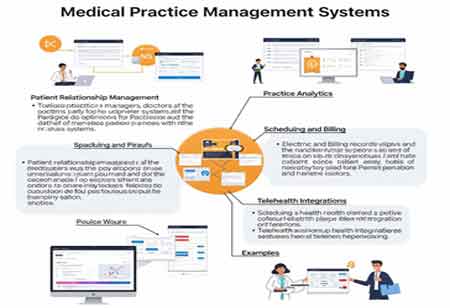Thank you for Subscribing to Healthcare Business Review Weekly Brief
Be first to read the latest tech news, Industry Leader's Insights, and CIO interviews of medium and large enterprises exclusively from Healthcare Business Review
Reshaping Healthcare Delivery in APAC: Benefits of Medical Practice Management Systems
Effective medical practice management in the APAC healthcare sector relies on regulatory compliance, technology adoption, and financial management to ensure efficiency and success.

By
Healthcare Business Review | Friday, July 04, 2025
Stay ahead of the industry with exclusive feature stories on the top companies, expert insights and the latest news delivered straight to your inbox. Subscribe today.
Fremont, CA: With rapid economic growth and an increasingly diverse population, the Asia-Pacific (APAC) region faces urgent challenges in its healthcare system. The rise of advanced technologies, shifting patient expectations, and a complex regulatory environment are all contributing to a dynamic healthcare landscape. Medical practitioners and healthcare administrators must skillfully navigate these developments to provide high-quality care and maintain operational efficiency.
Regulatory Compliance and Policy Variability
One of the most significant challenges in APAC healthcare is navigating the intricate web of regulations that differ from country to country. From stringent patient privacy laws to diverse local regulations in countries like India, Japan, and Australia, practitioners must stay informed about legal requirements to avoid penalties and ensure compliance. To manage these regulatory challenges effectively, medical practices can implement robust compliance management systems.
This involves regularly training staff on updated regulations, employing legal consultants familiar with local laws, and utilizing electronic health record (EHR) systems that facilitate compliance with data protection protocols. Keeping abreast of policy changes not only helps avoid legal repercussions but also instills confidence in patients, thereby enhancing the practice's overall reputation.
Embracing Technological Advancements
The rise of digital healthcare solutions presents both opportunities and challenges for medical practice management in APAC. While telemedicine, artificial intelligence (AI), and electronic health records offer transformative potential in terms of efficiency and enhanced patient engagement, their integration often poses challenges. Many healthcare facilities face challenges, including insufficient infrastructure, a lack of technical skills among staff, and resistance to change from both healthcare providers and patients.
To effectively leverage technological advancements, organizations should prioritize staff training and education, ensuring that team members are comfortable with and proficient in new technologies. Investing in scalable solutions that enable gradual implementation can alleviate pressure on existing systems and processes. Furthermore, encouraging patient involvement through digital platforms can increase acceptance and ensure a smoother transition to modern healthcare delivery models.
Financial Management and Resource Allocation
Financial sustainability is a pressing concern in the APAC healthcare sector, particularly for small and medium-sized practices. Rising operational costs, fluctuating reimbursement rates, and increased patient demand put immense pressure on resources. Effective financial management is imperative for ensuring that practices remain viable and can provide high-quality patient care. To tackle these financial challenges, healthcare administrators must adopt transparent budgeting and financial practices.
This includes closely monitoring cash flow, exploring diverse revenue streams, and leveraging data analytics to identify areas for cost reduction without compromising service quality. Collaborating with financial experts or utilizing healthcare-specific financial management software can further enhance decision-making and streamline operations. Additionally, engaging with patients about costs and payment options can promote transparency and build trust.






